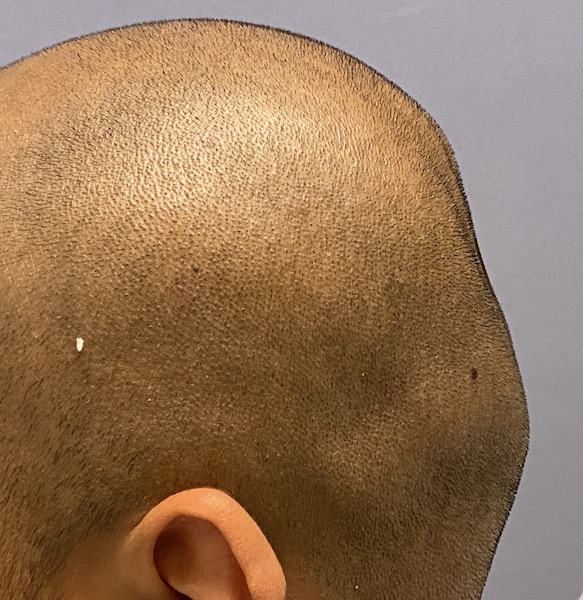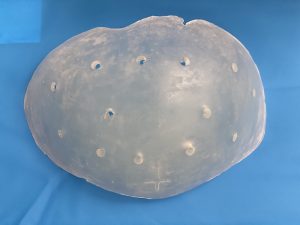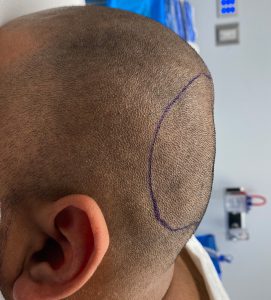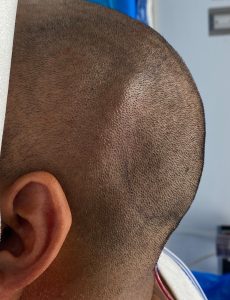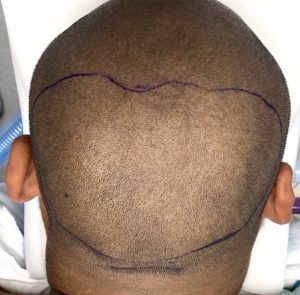Background: The skull is prone to deformational forces during its development which can adversely affect its shape. While these effects can occur anywhere on the five surfaces of the skull they are most commonly seen on the back of the head. This is probably due to the neonate’s head’s position in utero and most certainly the infant’s head positioning after birth.
By far the most common back of head shape deformity is plagiocephaly or a one-sided flattening. Less commonly seen is complete flattening of the normal convex shape of the back of the head. (brachycephaly) Brachycephaly presents on the back of the head with a variety of presentations. In its non-syndromic form it appears as a flattening of the occipital bone only, sparing much of the parietal bone flattening that occurs in syndromic forms. It can appear as a central occipital flattening or can even appear as an indentation bordered by the lambdoidal sutures superiorly. In side view the back of the head looks cut off or that the most posterior projection is missing.
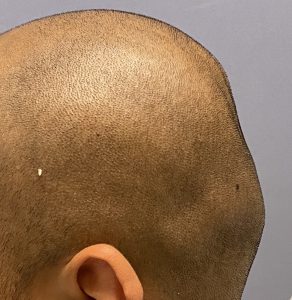
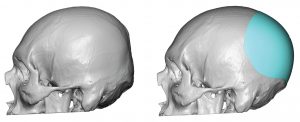
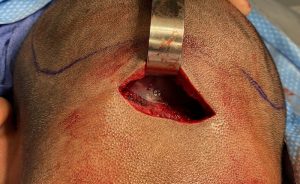
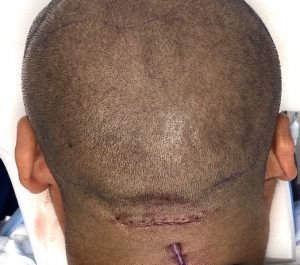
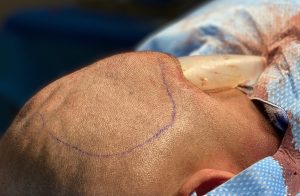
Case Highlights:
1) Lack of projection of the back of the head can affect it unilaterally (plagiocephaly) or bilaterally. (brachycephaly)
2) In brachycephalic skull deformities it is the occiput that is flat or even indented with surrounding surface irregularities.
3) A custom skull implant provides the most effective treatment of adult brachycephaly whose limits are determined by the stretch of the scalp which is best predicted by preoperative volume of the implant.
Dr. Barry Eppley
Indianapolis, Indiana

